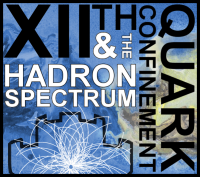Speaker
Description
Anisotropic flow studies play a crucial role in improving our understanding of the behaviour and the nature of matter created in collisions of heavy ions. The different flow harmonics ($v_n$) harmonics for identified particles can be used to constrain the initial conditions and the value of shear viscosity over entropy density ratio. These studies allow also to reveal the role of the hadronic rescattering phase in the development of flow.
In this talk I review the results from measurements of elliptic ($v_2$), triangular ($v_3$), quantrangular ($v_4$) and pentagonal ($v_5$) of identified particles from the RHIC and LHC heavy-ion physics programs.
Summary
Anisotropic flow studies play a crucial role in improving our understanding of the behaviour and the nature of matter created in collisions of heavy ions. The different flow harmonics ($v_n$) harmonics for identified particles can be used to constrain the initial conditions and the value of shear viscosity over entropy density ratio. These studies allow also to reveal the role of the hadronic rescattering phase in the development of flow.
In this talk I review the results from measurements of elliptic ($v_2$), triangular ($v_3$), quantrangular ($v_4$) and pentagonal ($v_5$) of identified particles from the RHIC and LHC heavy-ion physics programs.
